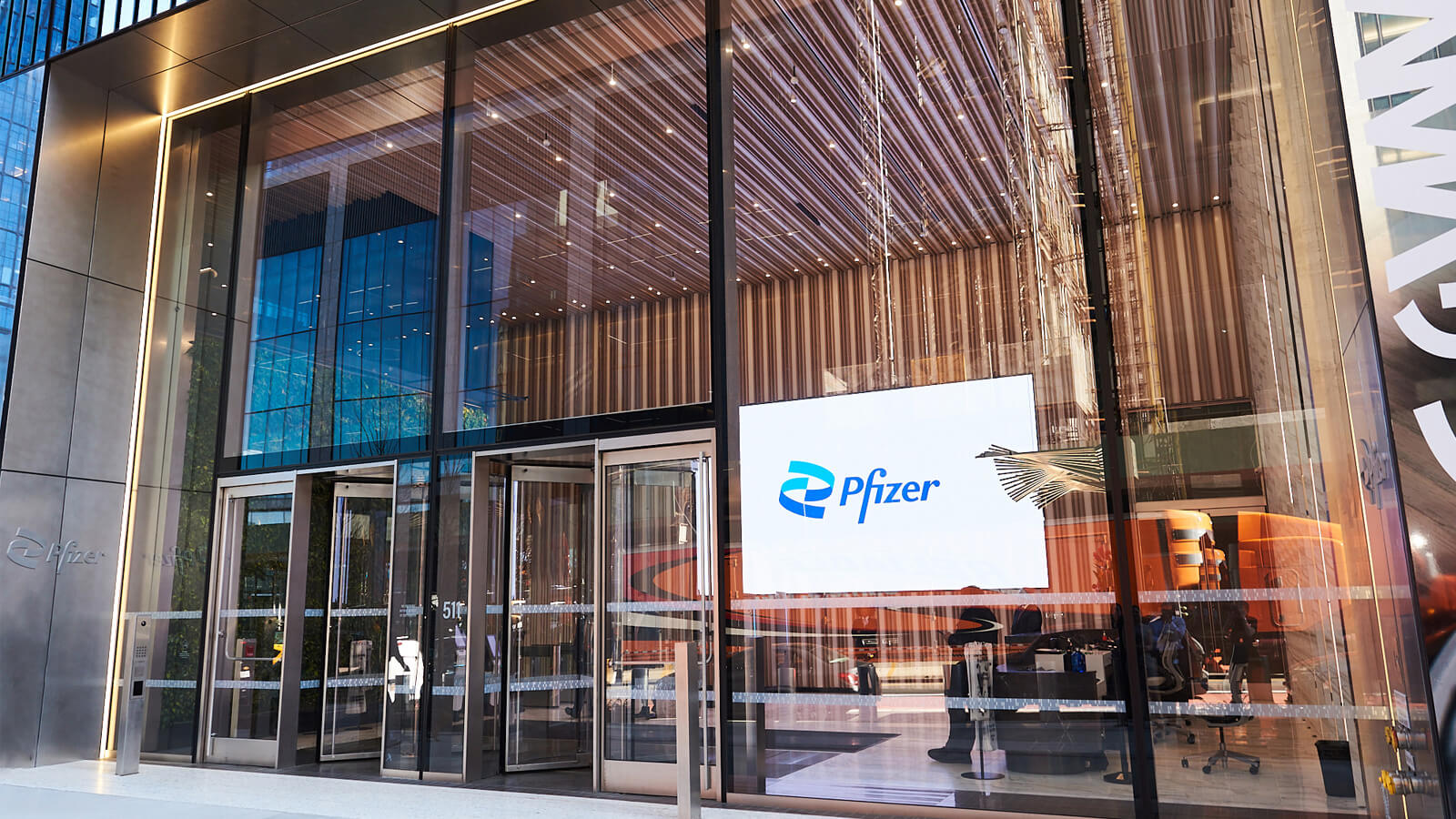The global pharmaceutical industry has continued to evolve since 2020 mainly due to the effects of the COVID-19 pandemic and the ever-increasing pressure for the adoption of digital technology. With the outbreak of the global health threat, business entities had to change the direction of their productivity plans and workforce policy. Pfizer, one of the biggest pharma companies globally, is specifically significant in this line of thought. After COVID, a few series of layoffs were made, with overheads cut by $3.5 billion to fit the post-corona needs of the market and restructure personnel in line with that.
This workforce shift is part of a larger phenomenon of the professional landscape in the pharmaceutical industry that is predicted to shed more than 100,000 workers in the next ten years because of the trends fueled by digital technologies and changing tasks. The ‘Great Resignation’ of 2020-2022 worsened the situation, as 54% of the pharmaceutical workers who quit during this period refused to come back to the sector. Additionally, 67% of pharmaceutical professionals confirmed that they are ready to alter their positions in 2021 as they want to have more challenging work and higher salaries.
Furthermore, this article examines the actions taken by Pfizer in relation to its staff during 2020 and beyond. It provides a detailed analysis of what has fueled such adjustments, their effects on employees, and the long-term repercussions for pharmaceutical firms.
Overview of Pfizer’s Workforce Strategy Pre-2020
Pfizer was an industry leader in the global pharma business even before COVID-19 disrupted it; it had a clear plan about its employees and workforce. The company had a global human resource of about 88, 000 direct organizational staff, focusing majorly on research and development, manufacturing, and other commercial activities. The world was home to Pfizer’s vast workforce, which had the largest pharmaceutical research facilities in the US and UK, as well as some others in Europe, Asia, and North America.
Pfizer used its growth strategy to double down on oncology, vaccines, and rare diseases pre-pandemic, putting innovation at its core. A significant research and innovation center was controlled by the company, which is believed to have set aside an estimated $8 billion every year for research and development of new drugs. Also, Pfizer’s competitors, especially in developed countries, had strong manufacturing capabilities, which made them equally capable of producing large quantities of its products.
Major innovation activities at Pfizer focused on R&D, and the company worked hard to achieve better productivity and drug development success rates. By the end of 2020, the clinical success rates for the new drug at Pfizer stood at 21%, considerably higher than the industrial average. This improvement could be realized by the end of 2020 due to the right positioning on the strategic therapeutic areas, timely decision-making to discontinue or abandon those projects, not delivering the expected results, and the introduction of digitization and artificial intelligence to amplify working efficiency.
The National Library of Medicine also reported that the company made sound decisions in managing R&D programs and discontinued projects that did not fit the core areas of interest in order to increase the chances of clinical trial success. Pfizer’s focus on innovation was reflected by the specific investments and the creation of partnerships that targeted the speeding up of the processes of drug development.
The Impact of the COVID-19 Pandemic on Pfizer
The pandemic had a knock-on effect on Pfizer’s talent management and working model. Here are some key ways the pandemic affected the company:
1. Increased Focus on Vaccine Development
Pfizer entered into a joint venture with Germany’s BioNTech for a COVID-19 vaccine, taking on roughly $2 billion at risk to support the search for the answers to the pandemic. The vaccine was also smoothly designed, produced, and delivered, which shows the company’s flexibility to develop and respond to changes in circumstances in an ethical manner and with patient safety in mind while also ensuring quality.
2. Commitment to Equitable Access
Pfizer shifted to the Infectious Disease (I.D.) Impact Initiative – a more sustainable social investment that ensures that neglected populations are protected against infectious diseases. The company also increased its patient support programs, and 699,896 patients were helped in 2020, which may not have been reached through normal commercial means.
3. Preserving the health of the employees
Pfizer established clear guidelines for the health and safety teams based on the government’s standards and closely monitored the developing situation with regard to work attendance, traveling, and wearing of personal protection equipment.
4. Maintaining Supply Chain Resilience
Despite the situation and the numerous difficulties that the COVID-19 pandemic has raised, manufacturing & supply chain professionals at Pfizer have been trying to make medicines available to patients across the world. The company stepped up production, redirected demand to some essential products, and permitted overtime in many centers to address the needs of the patient.
5. Providing Relief Efforts
The Pfizer Group and The Pfizer Foundation agreed to provide forty million US dollars in medicine and charity cash grants in order to counteract the worldwide influence of COVID-19. The company established the Global COVID-19 Medical Service Program, which aimed to enable medical colleagues to diagnose, treat, and support public health against COVID-19.
Pfizer’s Layoffs: A Closer Look
The coronavirus had a remarkable effect on Pfizer’s financial results, with important revenues in the sales of vaccines during the pandemic and a corresponding decrease in the results after the initial interest in coronavirus products. Here are the key financial metrics and trends:
Revenue Surge from COVID-19 Products
- 2021 Performance: Pfizer created revenues of $7.8 billion in the U. S. revenue from the Comirnaty COVID-19 vaccine and over $50 billion in worldwide revenue from the vaccine and the oral antiviral treatment, Paxlovid, in the same year. Thus, Pfizer’s total revenue rose to about $81.3 billion, twice the increase of 2020, thanks to such products.
- Market Share: As of 2021, approximately 70% of the U.S. and European market for the mRNA vaccine was captured by Pfizer.
Decline in Revenue
- 2023 Performance: This comes as no surprise, especially since the pandemic is no longer as urgent as it was back in 2020, and Pfizer is in major demand for its COVID-19 products. The company’s revenue was down by 42% in the third quarter of 2023, and the company registered a net loss of $2. 38 billion. This decline was attributed to a $5. 6 billion script write-off related to unused Paxlovid doses and a 70% reduction in the sales of Comirnaty to the prior year.
- Sales Forecast: Pfizer lowered its full-year 2023 sales outlook, which points to sustained declines in sales from COVID products as people use vaccines and treatment much slower than before.
Cost-Reduction Strategies
- Pfizer cut jobs by a lot because of a huge drop in sales of its COVID-19 vaccine, Comirnaty, and antiviral medication Paxlovid. The pandemic lost its urgency; therefore, the demand for these commodities slumped considerably. After giving an overestimate on the sale of these medicines by $9 billion Pfizer reduced its annual revenue forecast to $58 to $61 billion.
- Among other things, Pfizer implemented cost reduction measures such as shutting down their plants as well as laying off employees following declining sales to save approximately 2.5 billion dollars in 2024 and 1 billion dollars in 2023. Consequently, these moves were part of broader financial adjustments aimed at guiding the direction of business after the COVID-19 period.
Pfizer Layoffs from 2020
2020 – 2022
2020: Pfizer did not announce any major layoffs in 2020, despite the challenges posed by the COVID-19 pandemic. The company focused on developing its COVID-19 vaccine commercially during this time.
2021: There were rumors of potential layoffs at Pfizer in 2021, but no significant job cuts were confirmed. The company continued its vaccine production efforts.
2022: Pfizer acquired several companies, including Arena Pharmaceuticals and Biohaven Pharmaceutical, which led to some workforce adjustments. However, the total impact on jobs was not substantial.
2023
February 2023:
June 2023:
October 2023:
November 2023:
- This comes after a similar trend was recorded in the U.K., where around 500 positions were lost from its Sandwich site. The portage plant in Michigan is Pfizer’s largest manufacturing facility, and it has lost about 200 employees.
- In Ireland, the Newbridge factory let go of 100 jobs as part of their ongoing restructuring plan. Nonetheless, the company has also announced it is expanding its workforce in Grange Castle in Dublin and Ringaskiddy in Cork by 230 people.
2024
January 2024:
- The company had filed a WARN notice for closing its Pearl River location, which stated that about 285 employees would be laid off. This move was made with the aim of enhancing operational effectiveness through rationalizing costs.
- On January 5, 2024, Pfizer declared that there would be cuts on fifty-two posts at the South San Francisco campus, which formerly belonged to Global Blood Therapeutics. This action forms part of Pfizer’s broader cost reduction strategy, which is to decrease operational expenses amid declining demand for COVID-19 products.
February 2024:
- Pfizer has announced plans to close its facility in Peapack and Gladstone, New Jersey, which will result in layoffs affecting nearly 800 employees. The layoffs were said to take place on February 12, 2024. The majority of these workers will be reassigned to its New York office.
June 2024:
- The clinical trial by Pfizer, which aimed at significantly improving the motor function of boys aged 4 to 7 years old suffering from Duchenne muscular dystrophy, was unsuccessful. Consequently, about 200 jobs were expected to be cut in its Sanford facility, representing slightly above a tenth of all staff based there.
Long-Term Implications for the Pharmaceutical Sector
Several key trends that will dictate the future of the pharmaceutical industry have been identified from the COVID-19 pandemic and market situation analysis. In the long run, several main tendencies and problems that define the specifics of further sector development were singled out. Here are the key considerations:
1. Sustainability and Profitability Challenges
The pandemic at first helped the sector in terms of growth. Nevertheless, in dealing with COVID-19 products, high profitability issues appear as the demand weakens. Analyzing the sales for these products, it has been estimated that the sales forecast for these products is 66% lower in 2023, and hence, the pharmaceutical companies are in search of a new growth model. A lack of proper profitability strategies might cause a reduction in the sector’s overall profit level and force the sector to reconsider the aspects of its operation and costs.
2. Shifts in Patient Demographics and Healthcare Delivery
The evolution of patients’ characteristics and the medical environment, including the development of telemedicine, affect the prescription and supply of drugs. The consumer base has evolved for pharmaceuticals, and the structure of the healthcare system brings with it far-ranging changes for these firms. This calls for a workforce that is fully aware of these changes so that it can easily switch the strategies it is implementing.
3. Focus on Chronic Disease Management
As more individuals live longer and more have access to treatments for various other illnesses, there is a market pull for long-term treatments. Corporations in the pharmaceutical industry will have to put their resources towards the development of drugs in the realm of chronic disease therapy, which would naturally mandate a talented and trained human capital. It will help to innovate the industry to produce extra revenue circulation in the market and generate new business.
Comparing Pfizer’s Approach with Other Industry Giants
Johnson & Johnson
- Layoffs: Johnson & Johnson also announced layoffs in 2023, primarily in its consumer health division, as part of a broader restructuring effort to streamline operations. The company is focusing on its core pharmaceutical and medical device segments.
- Strategic Focus: Similar to Pfizer, J&J is concentrating on its pharmaceutical pipeline, especially in oncology and immunology, while divesting less profitable segments.
Bristol Myers Squibb (BMS)
- April 2024: BMS announced a “strategic productivity initiative” to generate $1.5 billion in cost savings by 2025, including eliminating around 2,200 jobs by the end of 2024.
- June 2024: BMS will lay off 863 employees in Lawrenceville, New Jersey, over the remainder of 2024.
- March 2024: BMS cut 75 jobs in Lawrenceville, New Jersey.
- November 2022: BMS axed 261 jobs across two sites in California related to its acquisition of Turning Point Therapeutics.
- May 2023: BMS disclosed it would cut 48 jobs in New Jersey.
Novartis
2022: Novartis dismissed thousands of employees globally as part of reorganization plans to merge its oncology and pharmaceuticals divisions.
- July 2024: Novartis laid off 29 employees in San Diego and plans to eliminate approximately 100 more jobs as it winds down its research site there.
- April 2024: Novartis announced plans to eliminate approximately 680 jobs in its development group over the next 2-3 years.
AbbVie
- Strategic Acquisitions: AbbVie has been actively acquiring companies to bolster its pipeline, similar to Pfizer’s acquisition of Seagen. AbbVie’s focus remains on immunology and oncology, reflecting a strategic alignment with market demands.
- Workforce Management: AbbVie has also faced layoffs, particularly in response to the patent expiration of its blockbuster drug Humira, indicating a trend of workforce adjustments in reaction to market pressures.
Frequently Asked Questions
Is Pfizer laying off employees?
Yes, Pfizer is laying off employees as part of a $3.5 billion cost realignment program. They’ve already announced cuts at several locations and plan more.
What pharma companies are being laid off in 2024?
- Novartis will lay off over 100 employees at its U.S. headquarters in New Jersey starting November 2023
- Biogen announced plans to lay off around 113 employees
- Thermo Fisher Scientific will lay off 97 employees in January 2024 and close a facility in Alabama
- Novavax announced a second round of cost cuts in 2023 to reduce spending by $300 million
Are more layoffs coming in 2024?
Yes, more layoffs are expected in the pharmaceutical industry in 2024 as companies continue to adjust to declining COVID-19 product sales and implement cost-cutting measures.
What is the largest pharma by employees?
The largest pharmaceutical companies by number of employees are:
- Johnson & Johnson – 141,700 employees
- Pfizer – 83,000 employees
- Novartis – 108,000 employees
- Roche – 100,920 employees
- Sanofi – 100,381 employees
Conclusion
The changes in Pfizer’s workforce since the year 2020 are in line with other pharmaceutical companies around the world because of the COVID-19 pandemic. Though these dismissals were thus precipitated by the recalibration operations, restructuring of operations, cost-cutting, and optimization of strategic strengths, they point to changing phenomena within the sector. The pandemic also affected how Pfizer, like many other companies, managed the workforce but at the same time strengthened and changed priorities toward new technologies and pandemic preparedness.
Thus, there are long-term effects that the pharmaceutical industry needs to manage in the future. Firms will strive to optimize the ratio between cost reductions and efficiency achievements, as well as the availability of skilled and healthy human capital ready to accommodate future health shocks. The industry’s future is expected to be determined by basic talent management, regulatory issues, and the public.





